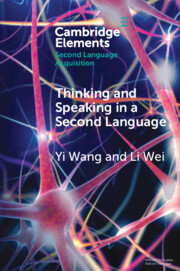Element contents
Thinking and Speaking in a Second Language
Published online by Cambridge University Press: 26 May 2022
Summary
- Type
- Element
- Information
- Online ISBN: 9781009075053Publisher: Cambridge University PressPrint publication: 23 June 2022
References
- 7
- Cited by

